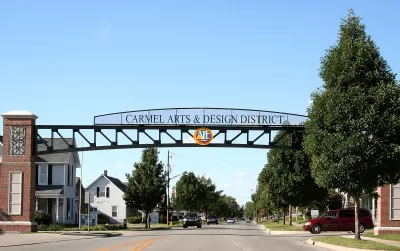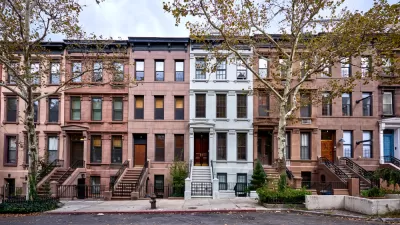Cities with populations between 25,000 and 100,000 continue to see an influx of migrants lured by lower costs of living and high quality-of-life metrics.

According to an article by Zoe Manzanetti, a new report quantifies the factors behind the urban exodus that began before 2020 and was accelerated by the pandemic. The report compared key social and economic factors in small cities—those with populations between 25,000 and 100,000—around the country and measured how they score on a variety of metrics that include cost of living, commute time, crime rates, and urban amenities.
Manzanetti quotes Jerry Anthony, an associate professor at the University of Iowa, on the benefits of small cities:
"Usually lower-cost housing, a better sense of community and connectedness to events and activities in the community, more opportunities to make a tangible difference through civic engagement, a greater sense of fulfillment and life satisfaction [and…] much less time spent commuting or traveling within the city."
The article details the scores of the cities in the top and bottom percentiles of the study on measures such as affordability, economic health, and safety.
Small cities have experienced steady growth as new flexibility offered by remote work, coupled with a desire to escape the confines of crowded urban areas during the pandemic and the spike in housing costs in major cities, have pushed many Americans to move out of metropolitan areas altogether and embrace the opportunities presented by smaller towns. This, in turn, has led to a rise in home prices and a phenomenon known as rural gentrification that, like its urban counterpart, threatens to displace long-term residents by pricing them out of the local housing market.
FULL STORY: The Migration to Smaller Cities Will Continue Post-Pandemic

Maui's Vacation Rental Debate Turns Ugly
Verbal attacks, misinformation campaigns and fistfights plague a high-stakes debate to convert thousands of vacation rentals into long-term housing.

Planetizen Federal Action Tracker
A weekly monitor of how Trump’s orders and actions are impacting planners and planning in America.

In Urban Planning, AI Prompting Could be the New Design Thinking
Creativity has long been key to great urban design. What if we see AI as our new creative partner?

Massachusetts Budget Helps Close MBTA Budget Gap
The budget signed by Gov. Maura Healey includes $470 million in MBTA funding for the next fiscal year.

Milwaukee Launches Vision Zero Plan
Seven years after the city signed its Complete Streets Policy, the city is doubling down on its efforts to eliminate traffic deaths.

Portland Raises Parking Fees to Pay for Street Maintenance
The city is struggling to bridge a massive budget gap at the Bureau of Transportation, which largely depleted its reserves during the Civd-19 pandemic.
Urban Design for Planners 1: Software Tools
This six-course series explores essential urban design concepts using open source software and equips planners with the tools they need to participate fully in the urban design process.
Planning for Universal Design
Learn the tools for implementing Universal Design in planning regulations.
Gallatin County Department of Planning & Community Development
Heyer Gruel & Associates PA
JM Goldson LLC
City of Camden Redevelopment Agency
City of Astoria
Transportation Research & Education Center (TREC) at Portland State University
Jefferson Parish Government
Camden Redevelopment Agency
City of Claremont





























